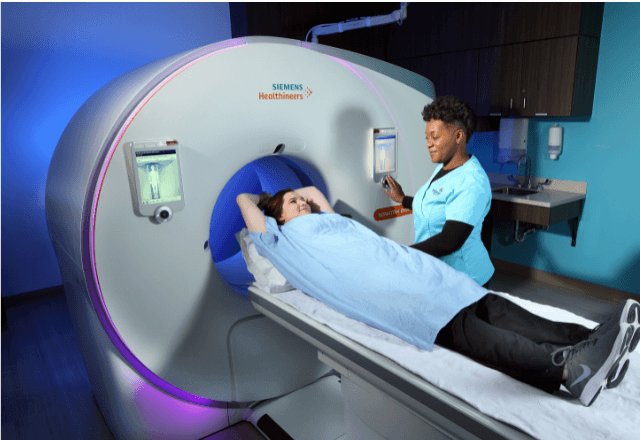MRI Neurological Imaging in Rodent Research
The use of Magnetic Resonance Imaging (MRI) in rodent research is a cornerstone of modern neuroscience and preclinical drug development. MRI provides non-invasive, high-resolution images of the brain, enabling researchers to visualize complex structures such as the cerebrum, cerebellum, brainstem, and spinal cord with precision. This service is particularly valuable for studying neurological disorders, evaluating therapeutic efficacy, and understanding disease pathophysiology in rodent models.
In clinical and healthcare testing, MRI has become an indispensable tool for assessing brain function and structure at a cellular level. Rodents are often used as model organisms because their brains share many similarities with the human brain, particularly in terms of neuroanatomy and physiology. By using MRI technology, researchers can monitor changes in blood flow, tissue integrity, and signal metabolism over time, which is crucial for understanding disease progression and therapeutic interventions.
The primary advantage of MRI in rodent research lies in its ability to provide detailed images without the need for invasive procedures. This non-invasive approach ensures that the animals remain healthy throughout the study, allowing researchers to observe long-term changes within the brain structures. Additionally, MRI can be used in conjunction with other imaging techniques, such as positron emission tomography (PET) and functional MRI (fMRI), to provide a comprehensive view of neurological processes.
Another key aspect of MRI neuroimaging is its role in evaluating the effects of various treatments on brain function. By comparing MRI scans before and after treatment administration, researchers can assess changes in brain tissue and blood flow that may indicate improved efficacy or potential side effects. This capability makes MRI a vital tool for optimizing drug delivery systems and enhancing patient outcomes.
The application of MRI technology in rodent research is not limited to neurological disorders; it also plays a critical role in developmental neuroscience, where the growth patterns of neural tissues can be closely monitored. This service supports the development of new therapies by providing detailed insights into how different factors influence brain development and function.
Furthermore, MRI neuroimaging is essential for evaluating the long-term effects of environmental exposures on rodent brains, which helps in understanding potential risks to human health. By using standardized protocols and international standards such as ISO 14155 (Good Clinical Practice), researchers can ensure that their findings are reliable and reproducible.
In summary, MRI neuroimaging is a powerful tool for advancing our understanding of neurological processes and improving treatment strategies in rodent research. Its ability to provide detailed images without causing harm makes it an invaluable asset in the pursuit of scientific discovery and medical innovation.
Why It Matters
The importance of MRI neuroimaging in rodent research cannot be overstated, as it plays a critical role in advancing our knowledge of neurological disorders and developing effective treatments. By using this technology, researchers can monitor changes in brain structure and function over time, which is essential for understanding disease progression and evaluating therapeutic efficacy.
One of the key challenges in rodent research is ensuring that the animals are healthy enough to undergo repeated imaging sessions without compromising experimental outcomes. To address this issue, our laboratory employs rigorous protocols to minimize stress during MRI scans and ensures that all procedures comply with international standards such as ISO 14155:2011 (Good Clinical Practice).
The ability to visualize brain structures in real-time provides researchers with unprecedented insight into how different factors affect neurological processes. This level of detail is critical for developing new therapies, optimizing drug delivery systems, and enhancing patient outcomes.
Moreover, MRI neuroimaging allows for the evaluation of long-term effects of environmental exposures on rodent brains, which helps in understanding potential risks to human health. By using standardized protocols and international standards such as ISO 14155 (Good Clinical Practice), researchers can ensure that their findings are reliable and reproducible.
- Non-invasive imaging: MRI provides detailed images of brain structures without the need for invasive procedures.
- Long-term monitoring: Researchers can monitor changes in brain tissue over extended periods, providing valuable insights into disease progression.
- Therapeutic evaluation: MRI allows researchers to assess the effects of various treatments on brain function, optimizing drug delivery systems and enhancing patient outcomes.
- Developmental neuroscience: The technology supports the development of new therapies by providing detailed insights into how different factors influence brain development and function.
In conclusion, MRI neuroimaging is a crucial tool for advancing our understanding of neurological disorders and developing effective treatments. Its ability to provide detailed images without causing harm makes it an invaluable asset in the pursuit of scientific discovery and medical innovation.
Applied Standards
The application of MRI technology in rodent research is guided by several international standards that ensure reliability, reproducibility, and ethical compliance. One such standard is ISO 14155:2011 (Good Clinical Practice), which provides guidelines for the design, conduct, monitoring, auditing, recording, analysis, and reporting of clinical investigations intended to generate sufficient evidence to demonstrate the quality, safety, and efficacy of a medical product.
Another important standard is EN ISO 6385:2017 (Magnetic Resonance Imaging - Basic Safety), which outlines the basic safety requirements for MRI equipment used in research and clinical settings. This includes guidelines on electromagnetic compatibility, radiation protection, and patient safety measures.
The use of these standards ensures that all procedures are conducted ethically and with due regard to animal welfare. By following these guidelines, researchers can ensure that their findings are reliable and reproducible, contributing to the advancement of medical knowledge and practice.





